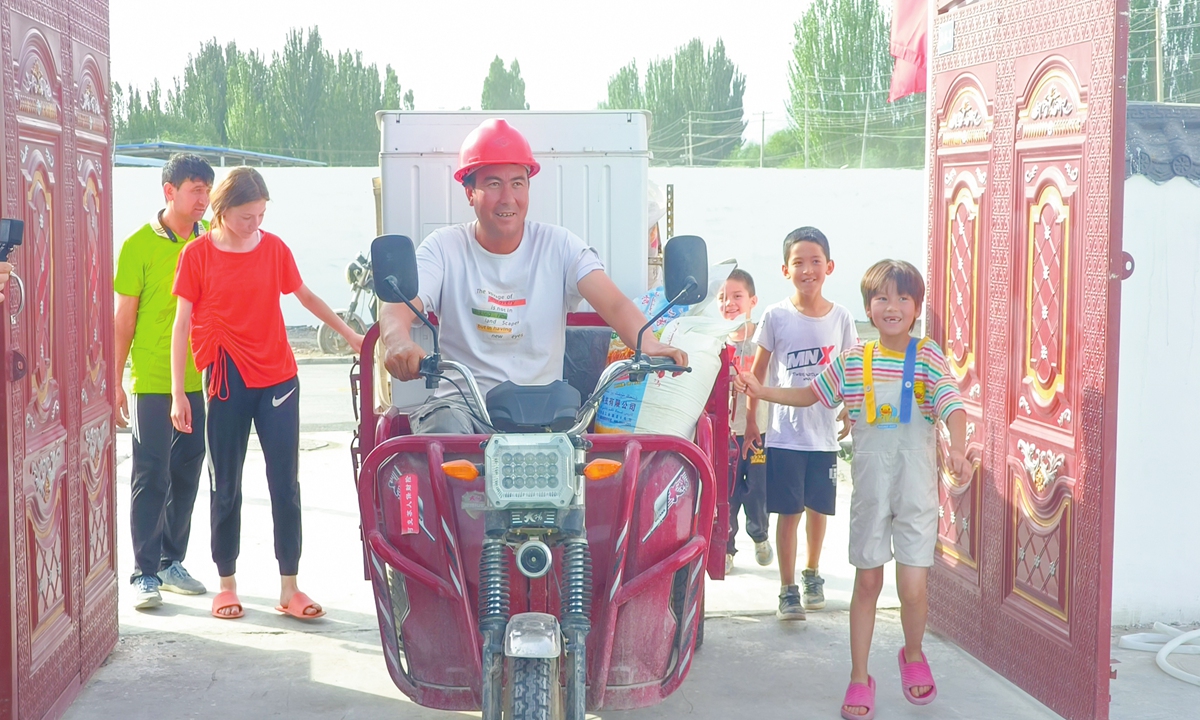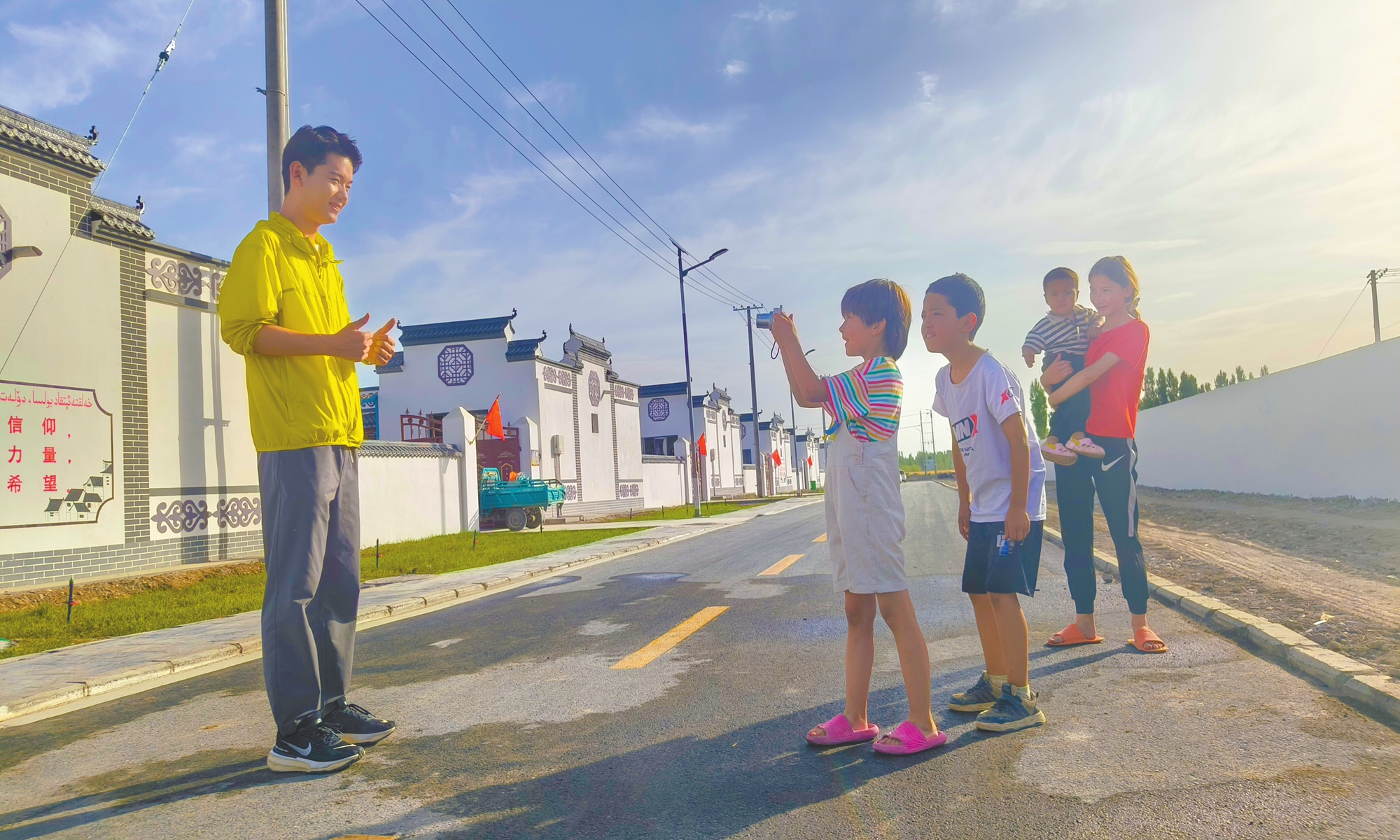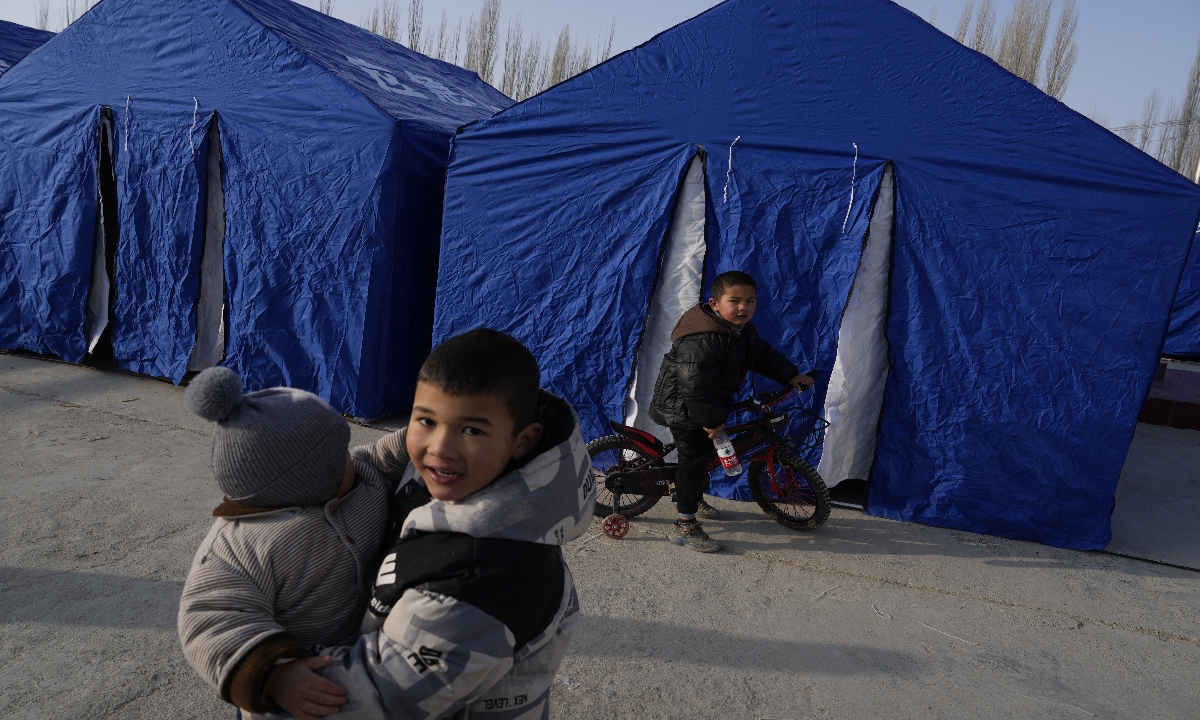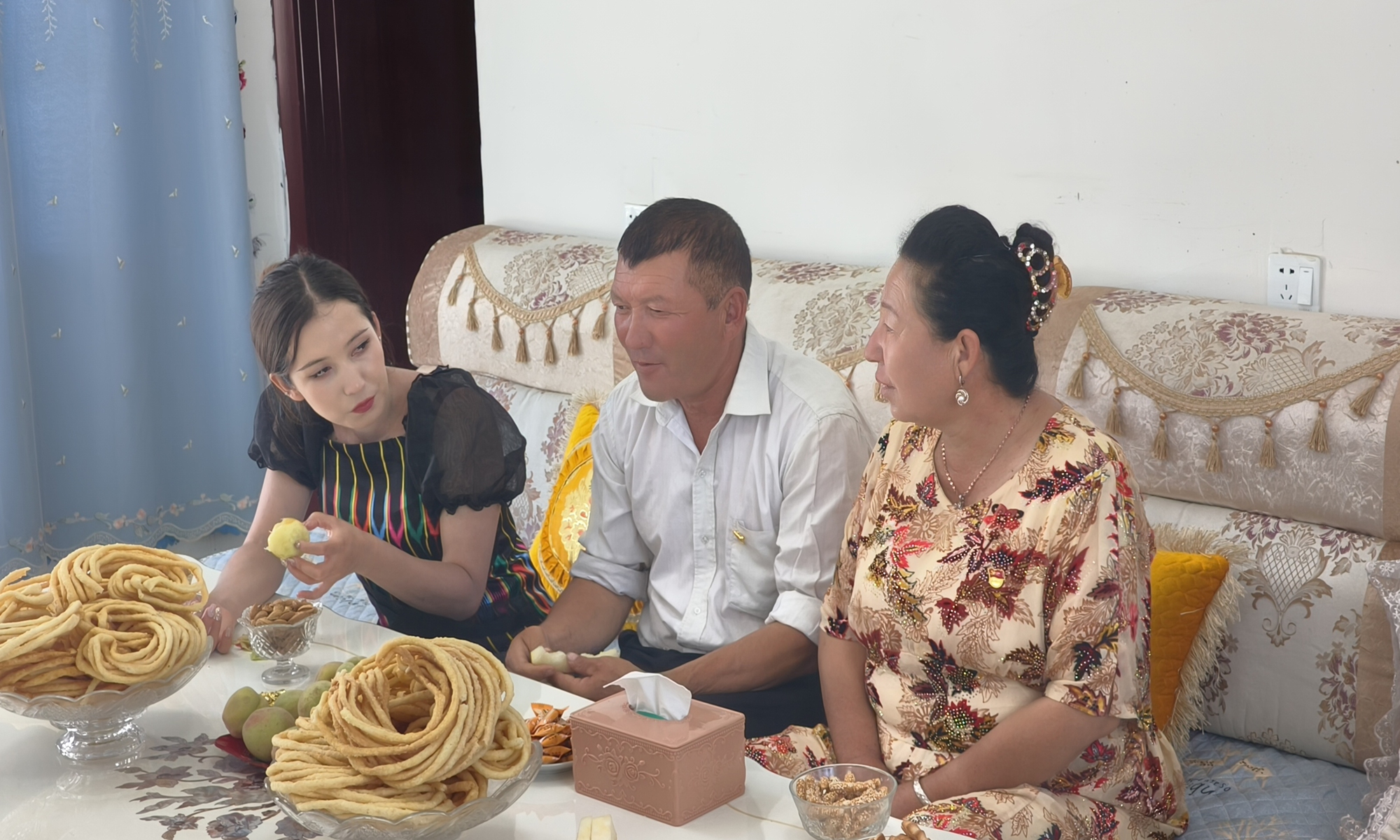Editor's Note:
China's human rights stories are unfolding in a new era of comprehensive deepening reform and historic changes. It is a key component of China's poverty alleviation and whole-process people's democracy, a thorough reformation in judicial, medical insurance and other key sectors related to the national economy and people's livelihood, as well as a combination of numerous impressive and inspiring individual stories.
To be nurtured in youth, be educated, secure gainful employment, receive medical care when ill, be cared for in old age, have a place to live, and be supported when weak... these are the concrete embodiment of human rights, which explains that the greatest human right is the right to the happiness of the people.
For a long time, politicians and media outlets in a handful of countries have remained hostile and prejudiced toward China, leading to a lack of understanding among foreign audiences when it comes to the concepts and achievements of China's human rights development. But what is revealed in the daily lives of the Chinese people speaks to the most basic truth: Rights to survival and development are fundamental human rights.
The Global Times is launching a series of articles, telling the vivid stories about upholding human rights in the new era. We expect the series to become a window through which more foreign readers will understand how Chinese people recognize human rights and what efforts they have made to fight for and fully enjoy human rights in their daily lives.

Local people move into their new home on June 30, 2024 in Wushi, Aksu. Photo: Courtesy of Aksu publicity department
For sixth-grader Gulsima Turhong, the excitement of moving to her new home is overwhelming. "There are so many good things about our new home," she said, with her voice brimming with enthusiasm.
On June 30, Gulsima's family, along with 1,023 other families, moved from their previous homes to the newly built Yemansu Happiness New Community, located in Wushi county in Aksu, Northwest China's Xinjiang Uygur Autonomous Region.
The reconstruction and move have transformed lives and landscapes for the better after a 7.1-magnitude earthquake that struck the region less than six months ago.
Gulsima's new home is spacious, with a yard where Gulsima can plant her favorite flowers and grapes. "I can't wait to see the flowers bloom and the grapes grow," she added.
The proximity to the bustling bazaar is another advantage. "It's so close that we can walk there in less than a minute," she remarked. "My parents have already gone to the bazaar," she said. "I really love living here. School is convenient, and there is a bus to the county town, which is also very convenient."
Xinjiang has a unique geographical environment and complex geological structure, which makes it prone to frequent geological disasters, especially earthquakes. Since 2004, Xinjiang has been the first in the country to implement the construction of earthquake-resistant housing in rural areas to withstand geological disasters and improve the living standards of the local people.
From 2011 to 2020, Xinjiang built over 2.6 million rural earthquake-resistant houses. Nearly 11 million people from various ethnic groups have moved into new homes, the Xinjiang Daily reported.
This reconstruction project in the region is a shining example of China's progress and commitment to human rights protection and cultural preservation, presenting a responsible and proactive image to the world.
A new communityOn June 30, Gulsima's family and their neighbors celebrated the completion of post-earthquake reconstruction with a ceremony marking the move into their new homes.
The celebration not only showed the recovery from the devastating 7.1-magnitude earthquake that struck in January, but also marked a significant leap in the quality of life for the affected population. The reconstruction efforts are also a testament to the nation's commitment to safeguarding human rights and preserving cultural heritage.
The disaster, which occurred on January 23, was met with an immediate and coordinated response from the central government, local authorities, and impacted community. With no casualties reported, the focus quickly shifted to providing shelter and ensuring the well-being of the 8,700 displaced residents. Temporary shelters were set up, and essential supplies were promptly delivered to the affected areas.
The reconstruction project, which includes 29 initiatives, has seen the completion of 15 key projects aimed at improving living conditions and infrastructure. Among these was the rebuilding of 209 homes on the original sites, the relocation of 41 households to the newly developed Yemansu Happiness New Community, the reinforcement of 731 existing homes, and the provision of 411 safe housing units in pastoral areas.
The Yemansu community, located in Bozi village of Wushi, is a prime example of the integration of traditional Chinese and local Kirgiz ethnic culture into modern living spaces.
The district spans 68 acres and includes not only housing but also essential services, such as shops, a day care center for the elderly, and a fitness square, the Global Times learned from local government.
Each household received a subsidy of 44,400 yuan ($6,216) to build additional facilities like grape trellises, flower walls, arched sheds, and color steel houses, enhancing the safety, quality, and livability of their homes.

Children take photos for a visitor in Yemansu Happiness New Community, Aksu, Northwest China's Xinjiang Uygur Autonomous Region on June 30, 2024. Photo: Courtesy of Aksu publicity department
Nurunisa Atawula, a 72-year-old resident of the new community, expressed her joy and gratitude told the Global Times, saying, "I am overjoyed. I never dared to dream of having such a good house at my age. Thank you to the Party and the government."
The reconstruction efforts were guided by a detailed plan formulated in consultation with the affected communities, ensuring that their needs and preferences were respected.
Aisikaer Aierken, Deputy Director of Wushi County Housing and Urban-Rural Development Bureau, emphasized the importance of choosing safe locations for rebuilding, such as the Yemansu community, which is situated 5.6 kilometers south of a geological fault line, offering a stable and spacious area for living.
The successful completion of the reconstruction tasks has not only restored the basic living conditions of the affected people, but also significantly improved their quality of life. Wushi county Party chief Yan Hua pledged to continue working on the next work of the post-disaster reconstruction article, focusing on creating a sustainable environment for the residents and enhancing their sense of satisfaction, happiness, and security.
Bouncing back from disasterIt was a normal summer evening when Memeti Nur, a villager from Ayiding village in Wushi county, finished a day of hard work and returned home, heading straight to the bathroom to wash the dust of his body.
In 2014, Memeti Nur and his family moved into a three-bedroom, two-living room house with complete facilities such as water, electricity, kitchen, toilet, and bathroom, which is part of Xinjiang's "comfortable housing" project.
On January 23, 2024, during the 7.1 magnitude earthquake, their house withstood the "big test," providing a "protective umbrella" for the whole family.
"When the earthquake struck, we didn't even have time to put on our clothes and rushed out," Memeti Nur said. "What surprised us was that despite such a strong earthquake, the comfortable housing's house stood firm without any damage, which is nothing short of a miracle."
Similarly, the nearby village of Youkake Yamansu also withstood the "big test" during this earthquake.
Recalling the earthquake, villager Mahemuti Yasen was full of emotions: "The intense shaking made me think the house was going to collapse. After dawn, I inspected the comfortable housing's house inside and out, and found only a few small cracks."

Children play outside shelter tents after the 7.1-magnitude earthquake in Wushi county, Aksu in January, 2024. Photo: VCG
"The earthquake had a large magnitude, but the damage to the houses at the county and township levels was not very significant... This shows that the effect of the Xinjiang comfortable housing project is good," said Jialin Nurhamiti, director of the Xinjiang Autonomous Region Emergency Management Department, at a press conference held after the earthquake in January.
Aksu is located on an earthquake fault line and is an area prone to frequent and severe earthquake disasters.
Since the region began the "comfortable housing" project in 2011, the Aksu region has received more than 8 billion yuan ($1.2 billion) in housing construction subsidies from the central government, autonomous region, and supporting provinces and cities, carrying out a comprehensive rural housing renovation in a model of whole-village promotion and demolition and reconstruction, to achieve the goal of at least one set of safe housing for each rural family, effectively ensuring the safety of people's lives and property.
Since 2011, Aksu has totally invested a total of 256 billion yuan to build more than 368,000 "comfortable housing" homes.
A project for the people"Hot and delicious Dapanji noodles are ready!" at a restaurant in a relocation community of Saybag village, Wensu county, Aksu, restaurant owner Guzailinur's call attracted customers to enjoy the delicious dishes.
Guzailinur's family used to live in a geological disaster area, where the housing was a mix of earth and wood structures, posing significant risks of landslides and mudslides during the rainy season and snowmelt.
These natural disasters not only threatened the lives and property of the residents, but also hindered the development of local industries.
In 2019, with the help of the Party and the government, Guzailinur's family moved to the relocation and poverty alleviation settlement and started a restaurant, becoming the owner.
"Now, the restaurant makes at least 3,000 yuan ($430) a month, and we plan to expand our business scope and scale. Better days are ahead," Guzailinur said confidently.
The settlement consists of three buildings with 103 housing units, and shops selling desserts, barbecue, catering, and general merchandise are neatly arranged.
Like the Saybag village's case, these houses built under the "comfortable housing" project in Xinjiang are not only seismic-resistant, but also comfortable to live in, with designs that reflect the consideration of the needs of local families.

People enjoy traditional snacks inside their new house at theYemansu Happiness New Community, Aksu on June 30.
The new communities boast comprehensive infrastructure such as water supply, electricity, parking lots, and also features cultural squares, sports squares, and leisure parks, creating a "5-minute convenience life circle" that greatly enhances the quality of life and happiness of the villagers.
In sync with the process of building comfortable housing, Aksu has also been developing its tourism, especially in the rural areas, which has facilitated the preservation of traditional culture.
For instance, Xinhe county is famous for the craftsmanship of Uygur folk musical instruments, where villagers not only make and sell instruments but also offer exhibitions and experience activities, allowing tourists to gain a deep understanding and experience of this traditional handicraft.
This approach that combines cultural inheritance with tourism experience not only enriches the experience of tourists, but also provides new ways for the protection and dissemination of traditional ethnic culture.







